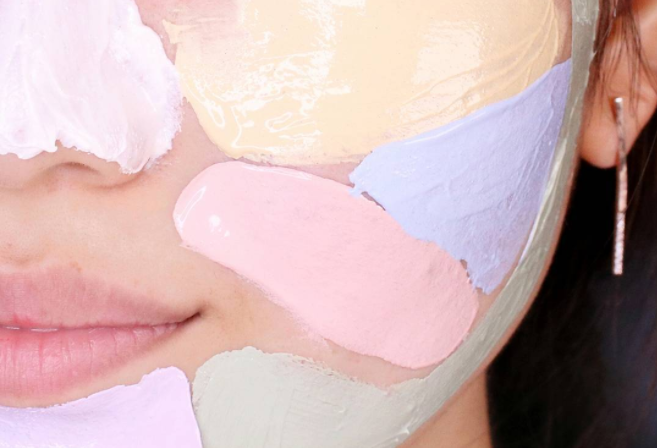'Multi-Masking' Is the Latest Instagram Beauty Trend. Is It Necessary?

At some point, while perusing your Instagram feed, you’ve probably come across posts of people with different-colored stripes on their faces. The effect is eye-catching, but it’s not just for show: The stripes are actually various beauty masks being used at once, as part of a growing beauty trend known as “multi-masking.”
The concept of multi-masking is simple: The different areas of your face have different needs, so you use a variety of masks at once to meet targeted skin issues. There’s no one way to multi-mask — Instagram is filled with images of people with several masks on their chin and nose, or one mask around their T-zone, with another on their cheeks — but it all seems a little time-consuming.
Still, is it worth the hype?
“I think it’s a good idea,” New York City dermatologist Doris Day, MD, author of Forget the Facelift, tells Yahoo Beauty. “The different parts of your face are different, so it makes sense to mix up your masks.” Gary Goldenberg, MD, a medical and cosmetic dermatologist in New York City, and assistant clinical professor at the Mount Sinai School of Medicine, agrees. “I like this concept because it allows [people] to address specific complaints of their skin in different areas,” he tells Yahoo Beauty, adding that it’s especially useful for people with combination skin.
Of course, there are a lot of masks on the market, and it can be tough to figure out what should go where. Joshua Zeichner, MD, a New York City-based board-certified dermatologist and director of cosmetic and clinical research in dermatology at Mount Sinai Medical Center, tells Yahoo Beauty that it’s a good idea to opt for a clay or salicylic acid mask around your T-zone. Then, use a calming, brightening, or hydrating mask around your cheeks.
If you have fine lines or wrinkles, Goldenberg says a hydrating mask with natural oils can help. Cheeks and the area under your eyes tend to be drier, Day says, which is why she recommends using a hydrating mask in both of those areas. She likens multi-masking to getting a treatment done at your dermatologist, since many will tailor services to target specific areas of your skin.
But multi-masking takes effort and is a serious step up from using one mask, which many people can’t even be bothered to do. However, Zeichner says they’re a good idea to use when you can handle it. “Masks offer concentrated treatments that may give improvements even after a single use,” he says, noting that you don’t need to use them on a daily basis.
If you don’t multi-mask or mask at all, Day says you shouldn’t stress — you’re not headed to skin purgatory. “Masks are a luxury and a treat; they’re not a necessity,” she says. Instead, she recommends focusing on cleansing, exfoliating, hydrating, and using sun protection on a regular basis, adding, “Everything else outside of that is icing on the cake.”
Read more from Yahoo Style + Beauty:
Boy Told He Wouldn’t Live to Be a Teenager Graduates From High School
Teen’s Grandma Gave Her a Graduation Gift She’d Been Making for 18 Years
Follow us on Instagram, Facebook, and Pinterest for nonstop inspiration delivered fresh to your feed, every day. For Twitter updates, follow @YahooStyle and @YahooBeauty.

